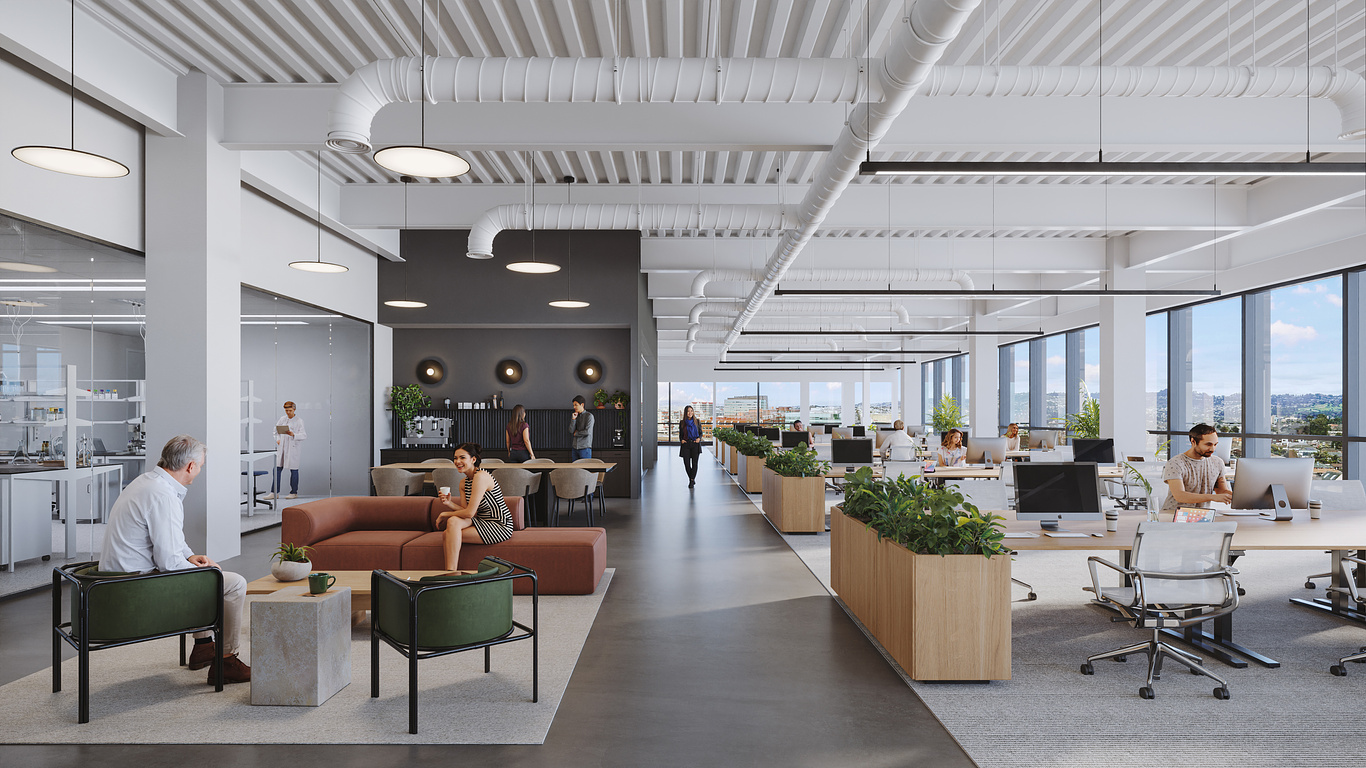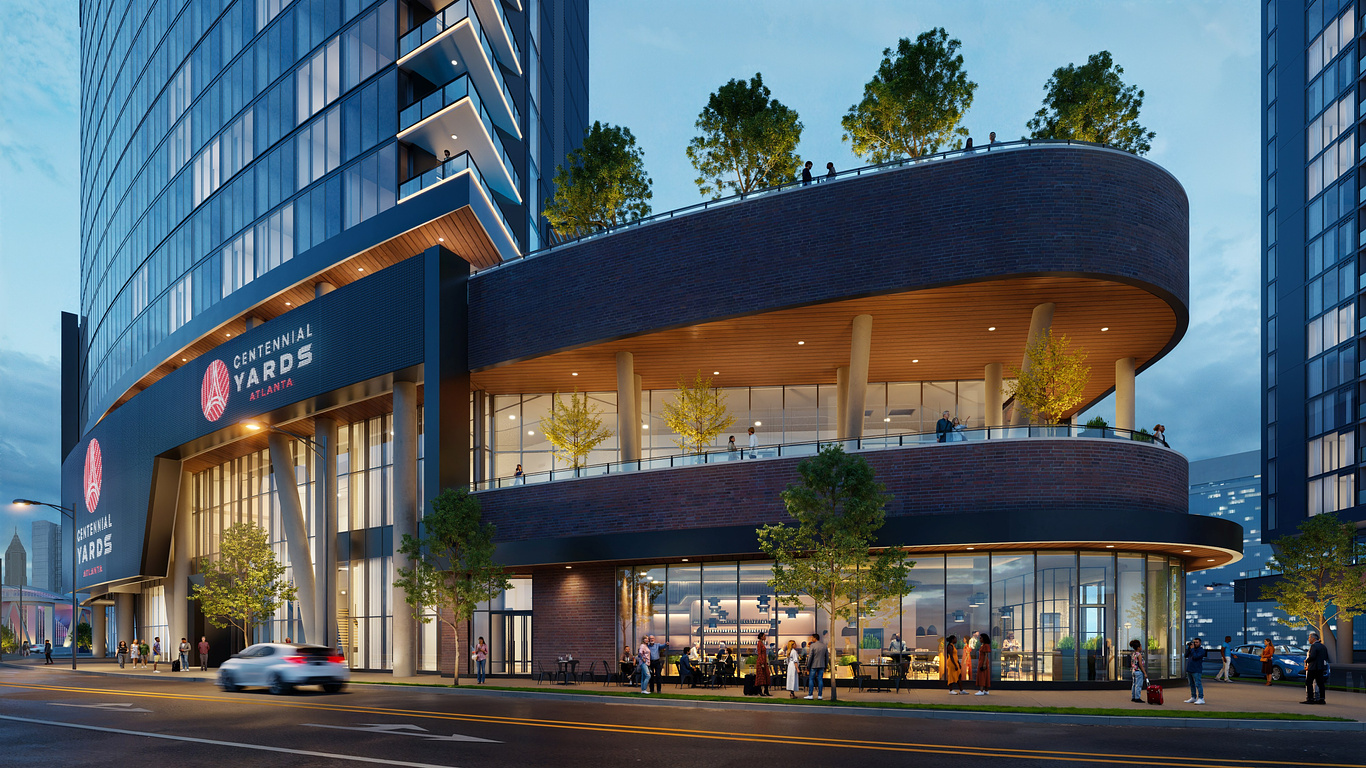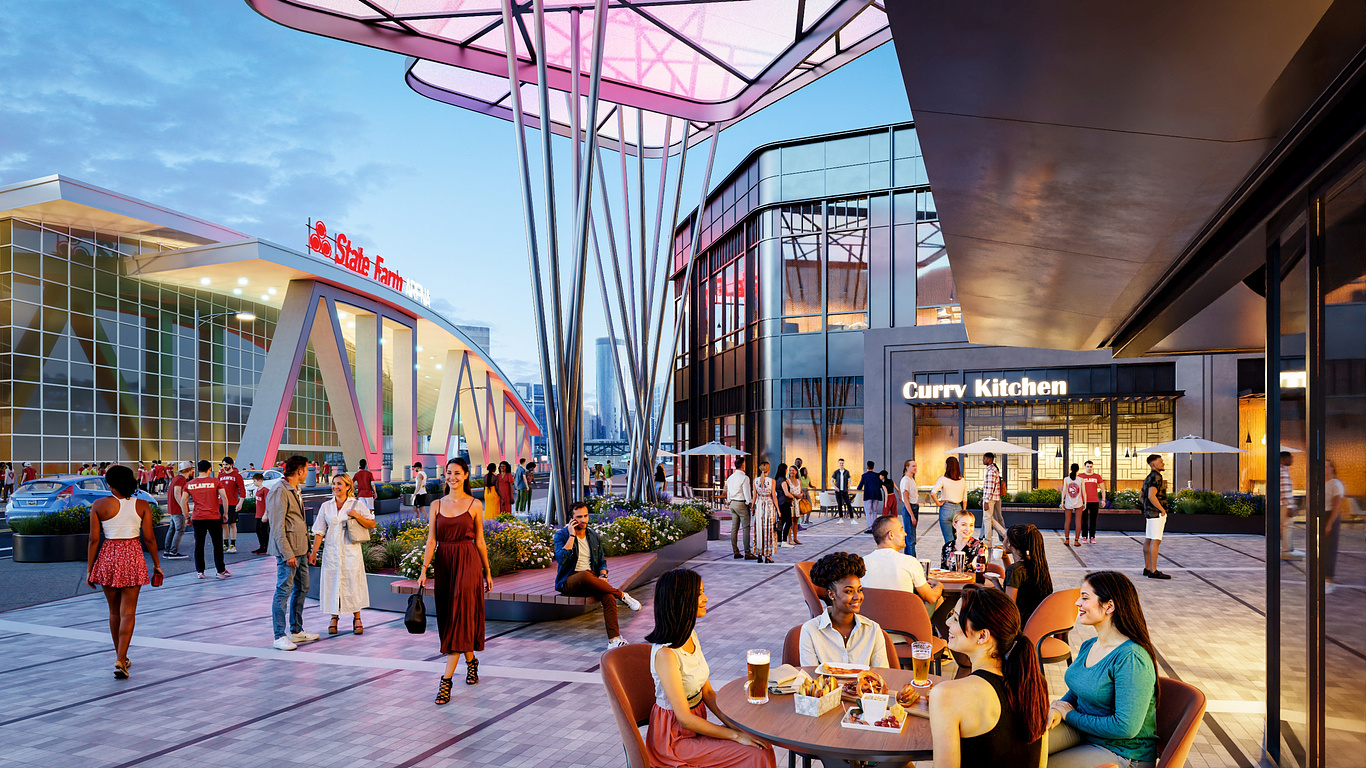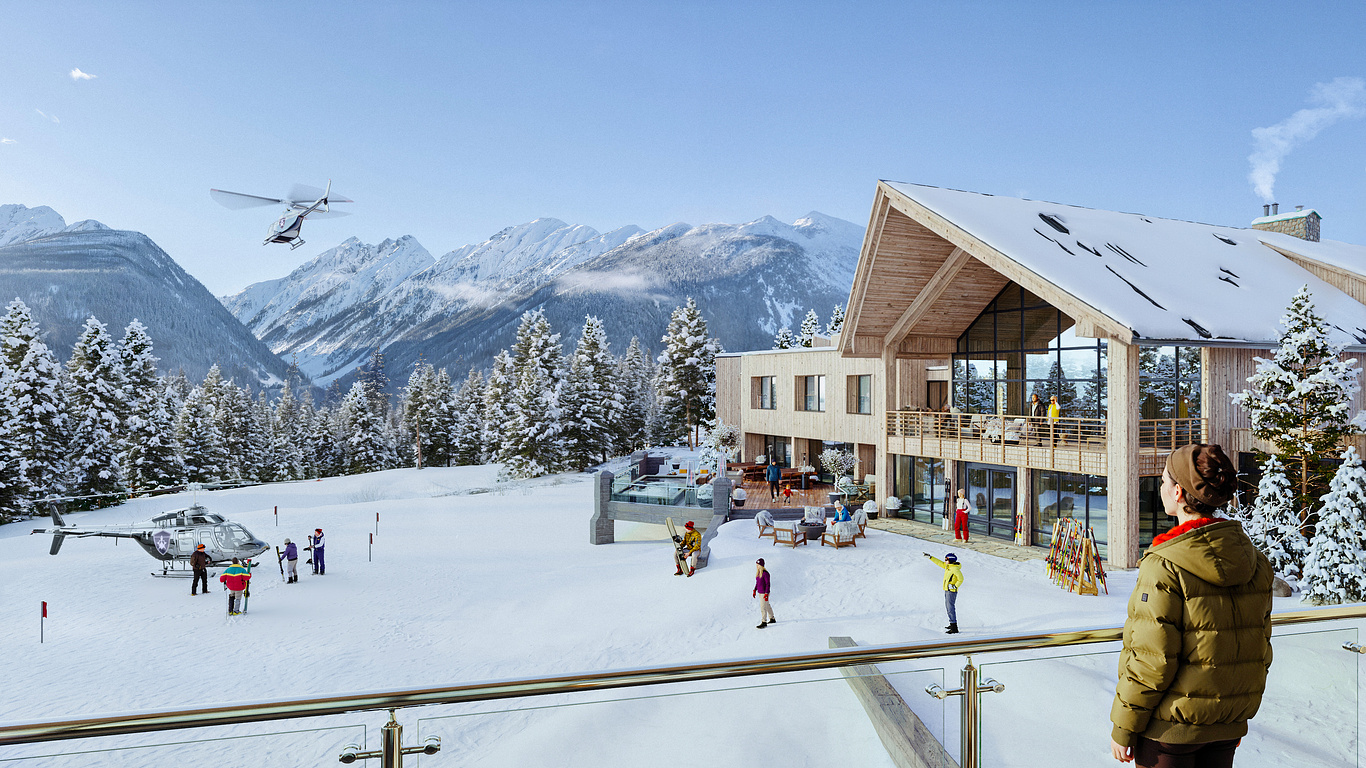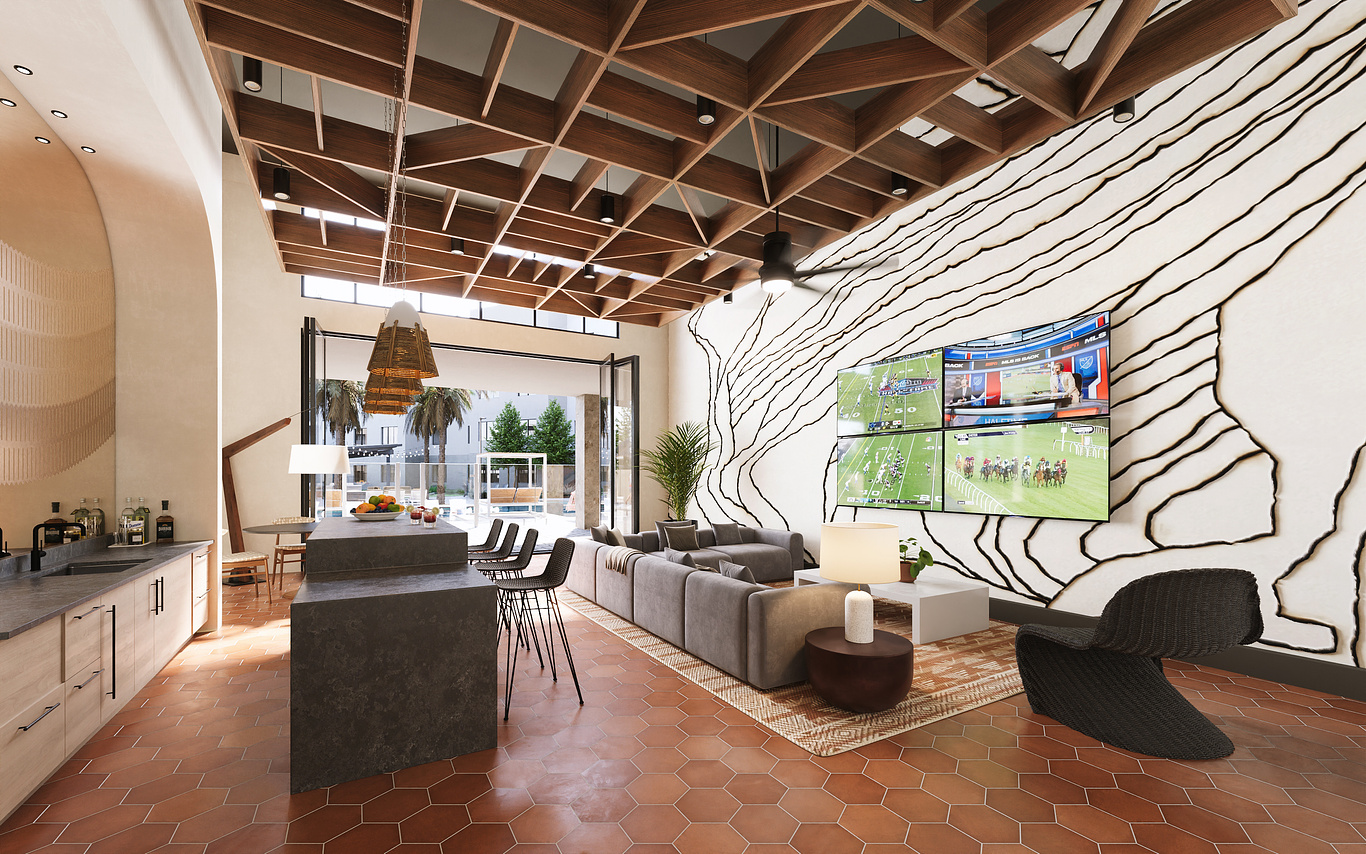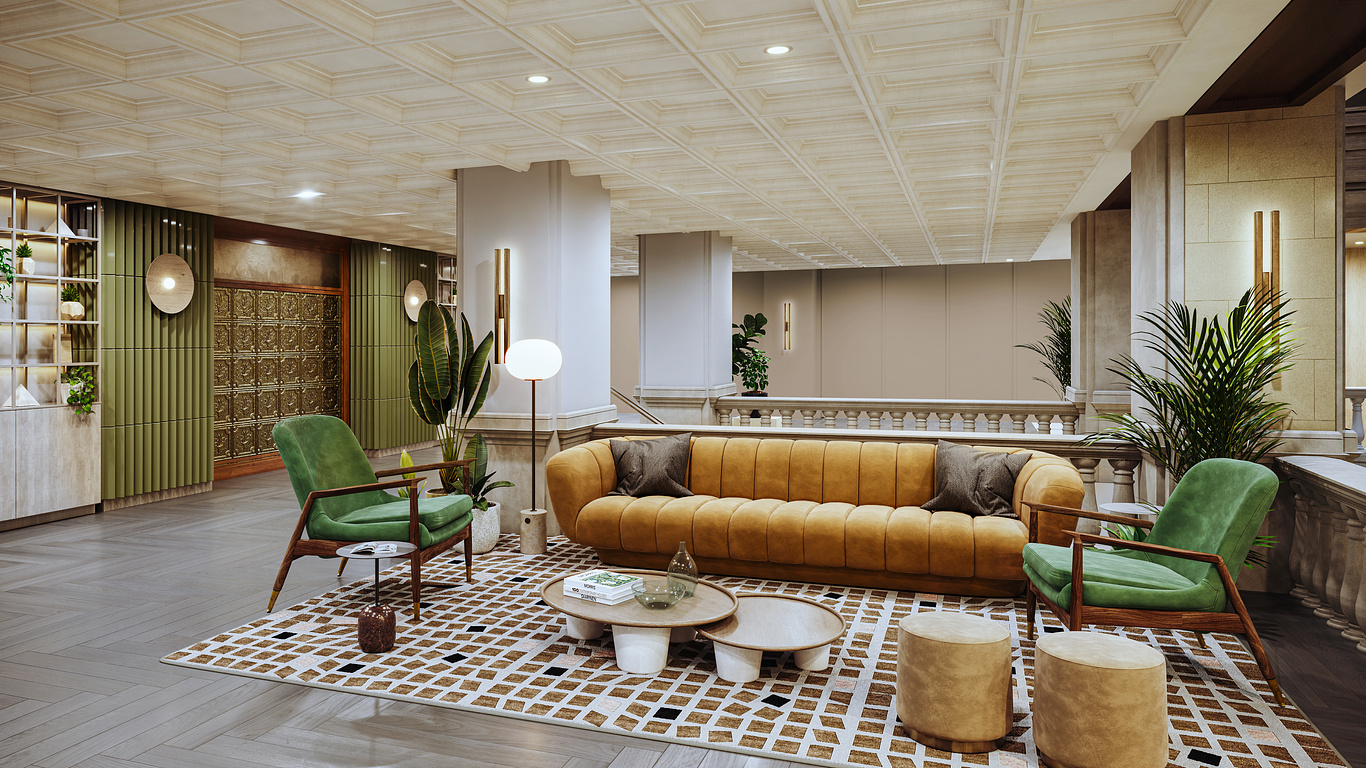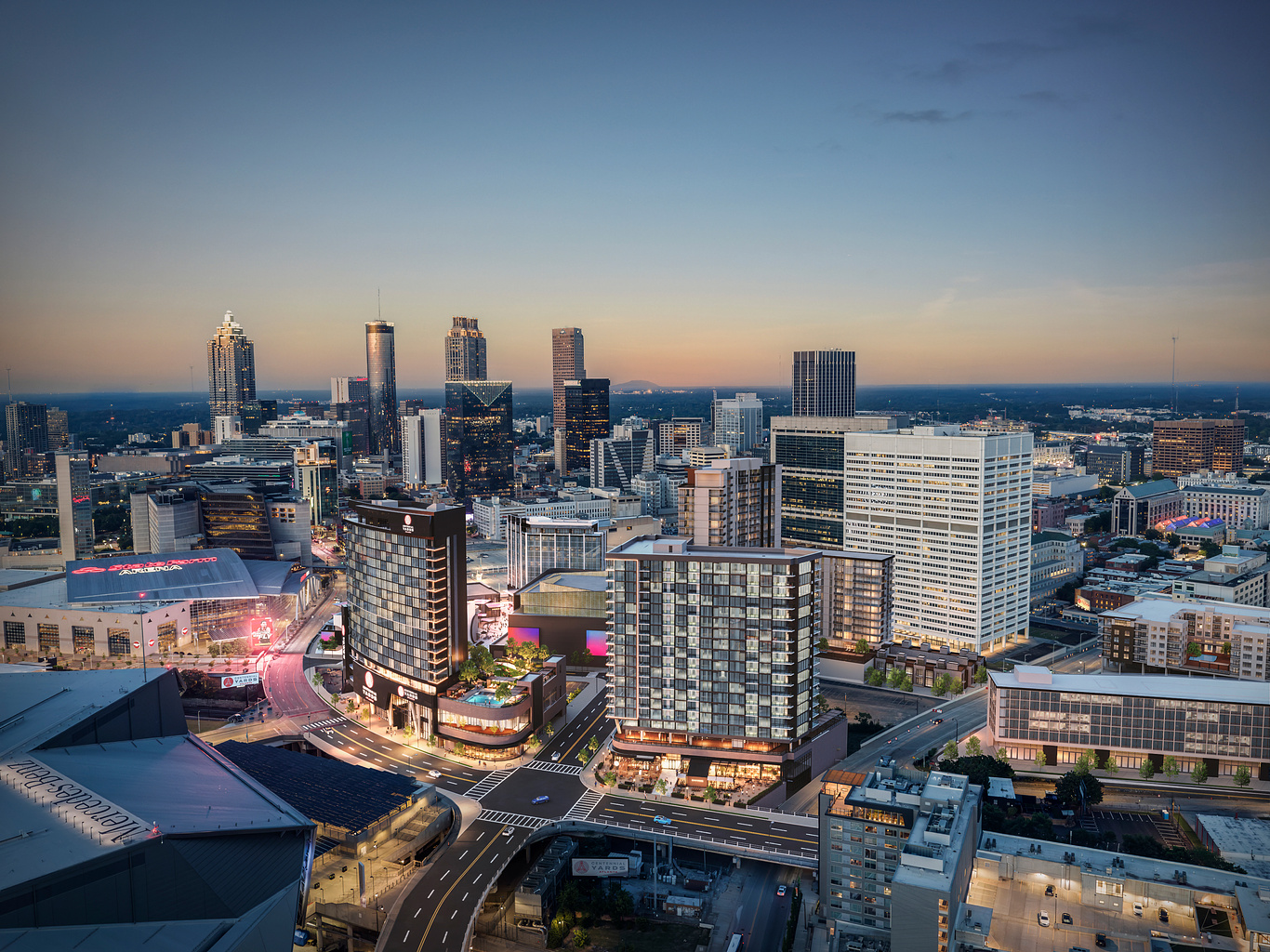
10 Questions With...
10 Questions with... Apex
Welcome to another installment of "10 Questions With," a feature series on CGarchitect.com where we delve into the minds and practices of the world's leading visualization studios. This week, we sit down with Scott Baumberger and Eli Perrett from Apex Visualization.
Apex Visualization, based in Portland (US), collaborates with real estate developers, architects, and corporations to create visuals that enhance project appeal and support decision-making. Utilizing advanced tools like real-time rendering and AI, they produce realistic, detailed visualizations. Apex combines cutting-edge technology with artistic vision, delivering innovative solutions tailored to clients’ needs while maintaining a commitment to excellence and attention to detail.
Apex Visualization, based in Portland (US), collaborates with real estate developers, architects, and corporations to create visuals that enhance project appeal and support decision-making. Utilizing advanced tools like real-time rendering and AI, they produce realistic, detailed visualizations. Apex combines cutting-edge technology with artistic vision, delivering innovative solutions tailored to clients’ needs while maintaining a commitment to excellence and attention to detail.
1. What inspired the name "Apex" for your studio?
"Apex" is a powerful, memorable name that symbolizes achieving peak creativity, quality, and client service. It represents our ambitions to be at the top of the industry by constantly innovating and providing leading edge visual solutions . The name also resonates with our studios’ collective love for the mountains and the outdoors.
2. How did the studio get its start, and what was the vision behind its inception?
Apex was founded by Scott Baumberger, an industry veteran with over 30 years of experience in architectural visualization. Apex was born from the need to adapt to the rapidly evolving technology like real-time rendering and artificial intelligence to provide clients with uniquely tailored solutions that not only meet expectations but provide real business value.
Our vision with Apex was to leverage new technologies without sacrificing the client care and artistic integrity that had always defined Scott’s work. While maintaining that personal attention to detail, Apex has expanded its capabilities to handle larger scale projects with much faster and higher-quality outputs.
3. How do you approach blending reality and imagination in your visualizations?
One of the most rewarding aspects of our work is finding the balance between technical precision and creative expression. In visualization, accuracy is essential, but creativity is equally important to ensure that the visuals resonate with our audience.
Ultimately our clients want visualizations that evoke emotion and tell a story, helping viewers imagine themselves within the space. In every project, we strive to ensure the design’s accuracy is maintained while also allowing for artistic flexibility to achieve a stunning result. Sometimes this means shifting or hiding elements like trees or light poles to open up view corridors or enhance the composition. There is always a balance between reality and imagination to showcase spaces beautifully. Above all, maintaining transparent communication with our clients is vital, keeping them involved in every decision to ensure clarity throughout the process.
4. What are the key challenges in architectural visualization today?
The challenges in our industry are multifaceted. First, there’s increasing pressure on pricing, especially as developers deal with tighter budgets due to rising construction and real estate costs. To navigate this we invest more time upfront, working closely with clients to understand their specific needs and constraints. This allows us to deliver tailored solutions that maximize value and ROI, regardless of the project’s size.
Staying on top of rapidly changing technology is another challenge. At Apex, we constantly evaluate new software and tools to ensure we’re using the best options for each project, improving both quality and speed while optimizing costs.
Lastly, compressed timelines are a growing concern. Clients expect high-quality results faster than ever. Thanks to our experience, we can anticipate potential issues and provide real-time solutions, helping us meet tight deadlines without compromising on quality. This ability to balance speed and precision is what sets us apart.
5. Can you walk us through your creative process for a typical project?
Every project we take on has its own unique needs and challenges, requiring a tailored approach. Often, clients come to us with ideas about mood, lighting, or camera angles. As creatives, it’s our job to build on those ideas and offer suggestions they may not have considered.
Our process kicks off with an online whiteboard, where the production team reviews project details such as architectural drawings, photography, and FF&E. We begin by gathering references and narrowing down the vision for the final output. It’s essential to establish key details early on such as the main areas of interest within the project, the audience for the visualizations, and how they’ll be used. For example, a marketing package might focus on ground-level lifestyle activation views, while a package used for entitlement might emphasize aerial viewpoints to highlight the surrounding area and key landmarks.
Next, we then dive into “camera exploration” utilizing real-time rendering software like Chaos Vantage which allows us to quickly capture a high volume of camera views. Once the client selects their preferred views, we move on to adding details, lighting, materials, and assets. We remain in constant communication throughout, checking in with the client at each step to ensure alignment before taking the visuals further. When the final visualizations are ready, we run them through AI tools like Stable Diffusion and Topaz to enhance entourage details and add textures like grunge or imperfections to materials and vegetation.
Throughout the process, we measure our work against the original vision and project goals. This flexibility, combined with a focus on delivering impactful and accurate visuals, ensures that we stay true to the client’s vision while keeping the project on track.
6. How has technology changed the landscape of architectural visualization?
In recent years, the most significant advancement in technology has been the introduction of real-time rendering and Generative AI. This combination has dramatically increased the level of realism we can achieve, and at a faster pace. Visualization artists have always been constrained by hardware limitations, and with even the fastest hardware and utilizing rendering farms there are limits on how quickly each frame can be rendered. By leveraging real-time engines like Vantage and upscaling with AI tools such as Stable Diffusion, we’ve reduced rendering times by nearly 8x.
This efficiency not only accelerates project delivery but also provides more time for refining the project's storytelling elements and optimizing workflows. We can now better organize files and control outputs with greater precision.
AI is transforming how we approach visual design, and while some fear that AI might replace human artists, we prefer to use it as a tool that can enhance our creativity. Each technological leap comes with its own challenges, but by remaining adaptable and focused on our clients’ needs, we’ve turned these advancements to our advantage.
7. Could you share insights on a particularly challenging or unique project?
Centennial Yards in Atlanta is one of our most exciting and challenging projects. This $5 billion, 50-acre urban revitalization aims to transform underutilized land into a vibrant community, blending commercial, residential, and entertainment spaces. We provided CIM Group with everything from branding materials to still images, animations, and interactive content.
Our goal was to produce all visualizations using real-time rendering software Chaos Vantage. The challenge was that the project’s focus, known as “The Entertainment District” spanned over 20 acres, requiring us to heavily optimize the scene assets, vegetation, and materials in order for our PCs to handle it. Even with our production team's multiple RTX 4090 graphics cards, we hit VRAM limitations. To render the stills and 360° images for interactive viewers, we had to split the scene into layers, turning off high-polygon and high-resolution elements selectively and then composite them back together in post-production. Thankfully, Chaos Vantage’s real-time capabilities allowed us to render 4k frames in less than five minutes, saving us time in the overall process.
Another challenge was incorporating over 250 unique animated 3D characters using Anima to use within our animation. This was one of the first times we used Anima inside of Chaos Vantage, and we quickly learned the complexities of choreographing the characters to avoid overlaps and intersections within each viewpoint.
8. What are the future trends you foresee in this industry?
As advanced rendering technologies become more accessible, visualization projects traditionally handled by studios and freelancers are now being adopted in-house. This trend will continue as real-time rendering and generative AI tools become easier to learn and more integrated into architects' workflows.
At Apex, we offer solutions that extend the capabilities of in-house teams and push the creative boundaries of architectural visualization. While technology enhances the process, the human touch—creativity, storytelling, and emotional connection—remains vital in crafting compelling visual experiences.
Looking to the future, we expect architectural visualization to continue the shift from early-phase design drawing to later-stage marketing and sales campaigns, where artistry and storytelling take center stage. At Apex, we’re prepared for this evolution, and continue to bring an artistic and emotional approach that helps projects not only stand out but leave a lasting impact, driving their long-term success.
9. How do you ensure client satisfaction and manage expectations in such a detail-oriented field?
Communication, transparency, and collaboration are at the core of everything we do. We approach each project not just as a service provider, but as a trusted consultant and partner. Building strong relationships with our clients, rooted in trust and openness, is our priority. This foundation helps set realistic expectations and ensures we deliver within the project’s timeline.
We believe managing expectations starts with setting clear milestones and proactively addressing potential challenges early on. By asking the right questions upfront, we develop a schedule that balances efficiency with flexibility, keeping the project on track.
A key to our success is our custom client portal, which gives clients full visibility into the project's progress. They can track timelines, review deliverables, and stay updated at their convenience, ensuring transparency throughout the process.
At Apex, our industry expertise, paired with open communication and thoughtful collaboration, ensures we consistently meet client expectations with precision and care.
10. Lastly, where do you see Apex in the next 5 years, and what are your goals for the studio's future?
In the next five years, Apex aims to redefine the boundaries of architectural visualization by seamlessly integrating AI and real-time rendering into every aspect of our process. Innovation is at the heart of our vision, and we believe that dedicated R&D is crucial to staying ahead of software advancements and industry trends. We are committed to making research and experimentation a constant part of our workflow.
We see Apex as still in its early stages, with vast potential ahead. We are focused on growing our team with passionate, forward-thinking artists who thrive on pushing the limits of what’s possible in real-time rendering and AI. While real estate is at the core of what we do, we see ourselves as leaders in digital visualization, ready to evolve as the 3D industry grows
We strive to continue to create visual stories that are thoughtful, authentic, and true to the essence of each project. The greatest reward is providing value for our clients through our collaboration as artists. As we continue to grow, these connections will remain the foundation of our success, fueling the creativity and innovation that drive us forward.

Apex
Apex is a visualization studio that collaborates with developers, agencies and architects to translate their design into beautiful and impactful visuals
You must be logged in to post a comment. Login here.
About this article
Welcome to another installment of "10 Questions With," a feature series on CGarchitect.com where we delve into the minds and practices of the world's leading visualization studios. This week, we sit down with Scott Baumberger and Eli Perrett from Apex Visualization.
visibility366
favorite_border1
mode_comment0


